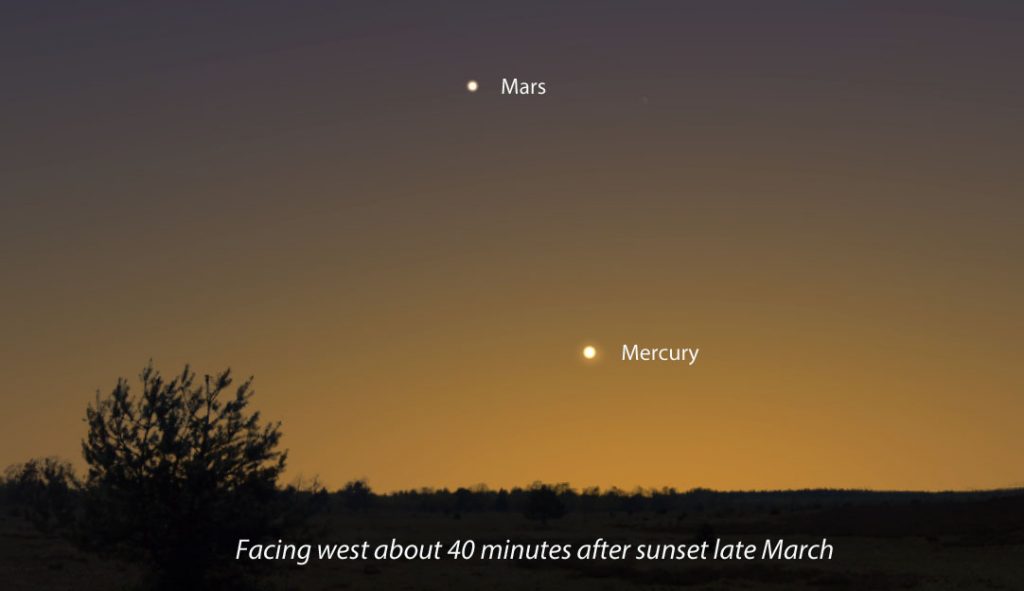
Mercury requests the company of your gaze now through the beginning of April, when it shines near Mars low in the west after sunset. Created with Stellarium
March has been a busy month for planet and comet watchers. Lots of action. Venus, the planet that's captured our attention at dusk in the west for months, is in inferior conjunction with the Sun today. Watch for it to rise before the Sun in the eastern sky at dawn in about a week.
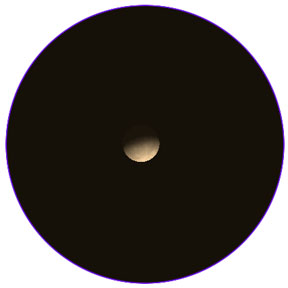
Mercury like Venus and the Moon shows phases when viewed through a telescope. Right now, the planet is in waning gibbous phase. Stellarium
As Venus flees the evening scene, steadfast Mars and a new planet, Mercury keep things lively. For northern hemisphere skywatchers, this is Mercury's best dusk apparition of the year. If you'd like to make its acquaintance, this week and next are best. And it's so easy! Just find a spot with a wide open view of the western horizon, bring a pair of binoculars for backup and wait for a clear evening.
Plan to watch starting about 40 minutes after sundown. From most locations, Mercury will appear about 10° or one fist held at arm's length above the horizon a little bit north of due west. Shining around magnitude +0, it will be the only "star" in that part of the sky. Mars is nearby but much fainter at magnitude +1.5. You'll have to wait at least an hour after sunset to spot it.
Have a telescope? Check out the planet using a magnification around 50x or higher. You'll see that it looks like a Mini-Me version of the Moon. Mercury is brightest when closest to full. Over the next few weeks, it will wane to a crescent while increasing in apparent size.
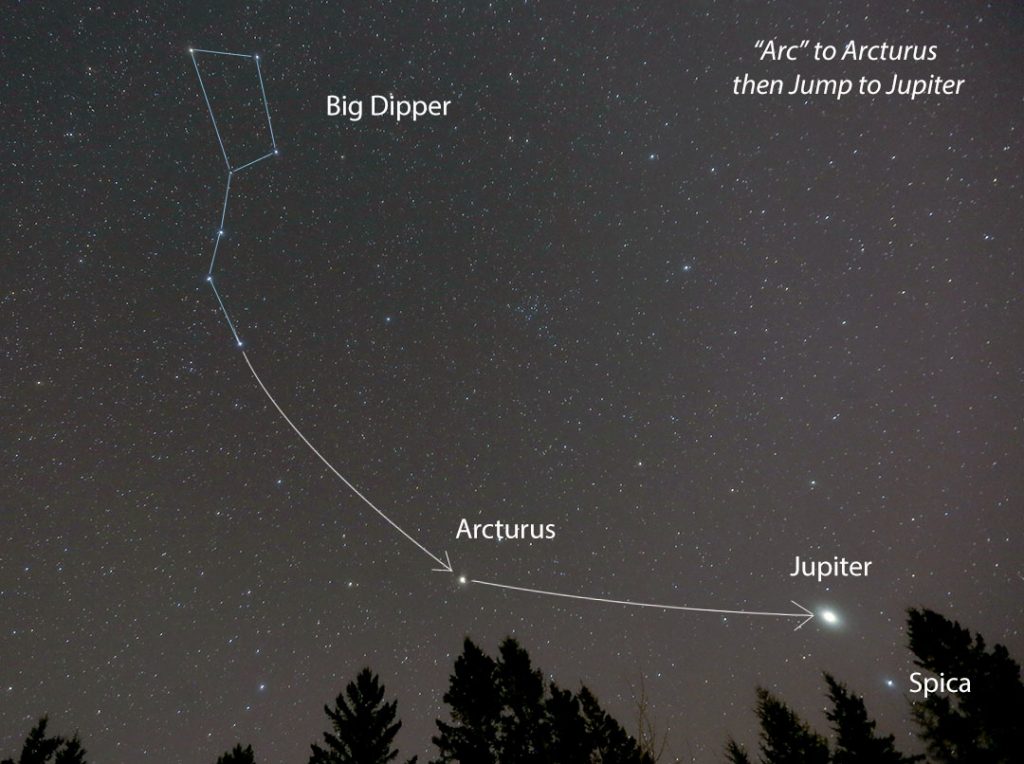
If you have any difficulty finding brilliant Jupiter and its current pal, Spica, just start with the Big Dipper, now high in the northeastern sky at nightfall. Use the Dipper's handle to "arc to Arcturus" and then "jump to Jupiter." Credit: Bob King
If you like planets, don't forget the combo of Jupiter and Spica at the opposite end of the sky. Jupiter climbs out of bed and over the southeastern horizon about 9 p.m. local time in late March, but to see it and Spica, Virgo's brightest star, give it an hour and look again at 10 p.m. or later. Quite the duo!
You're not afraid of getting up with the first robins are you? If you set your alarm to a half hour or so before the first hint of dawn's light and find a location with an open view of the southeastern horizon, you might be first in your neighborhood to spot Terry Lovejoy's brand new comet. His sixth, the Australian amateur discovered C/2017 E4 Lovejoy on the morning of March 10th in the constellation Sagittarius at about 12th magnitude.
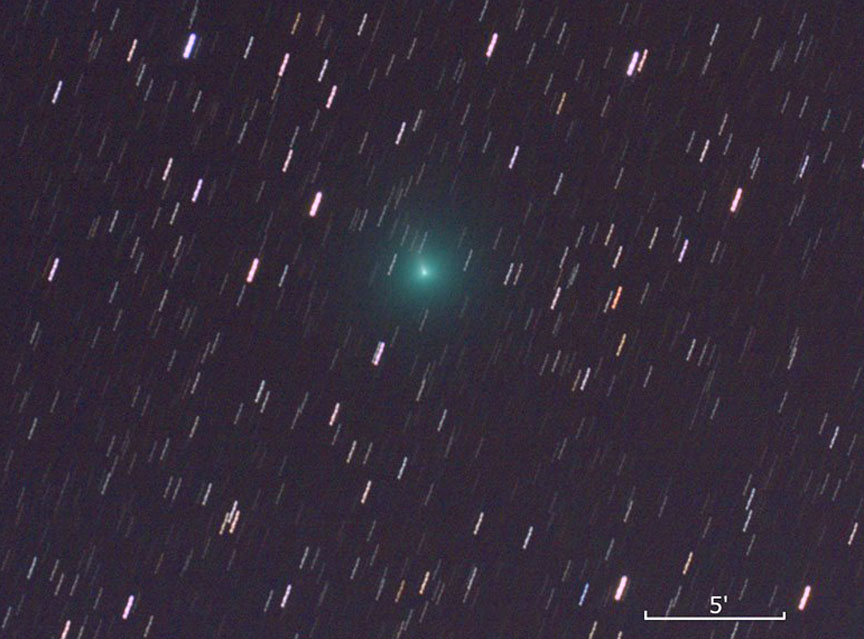
C/2017 E4 Lovejoy glows blue-green this morning March 26. Structure around the nucleus including a small jet is visible. The comet is currently in Aquarius and quickly moving north and will reach perihelion on April 23. Credit: Terry Lovejoy
The comet has rapidly brightened since then and is now a small, moderately condensed fuzzball of magnitude +9, bright enough to spot in a 6-inch or larger telescope. Some observers have even picked it up in large binoculars. Lovejoy's comet should brighten by at least another magnitude in the coming weeks, putting it within 10 x 50 binocular range.
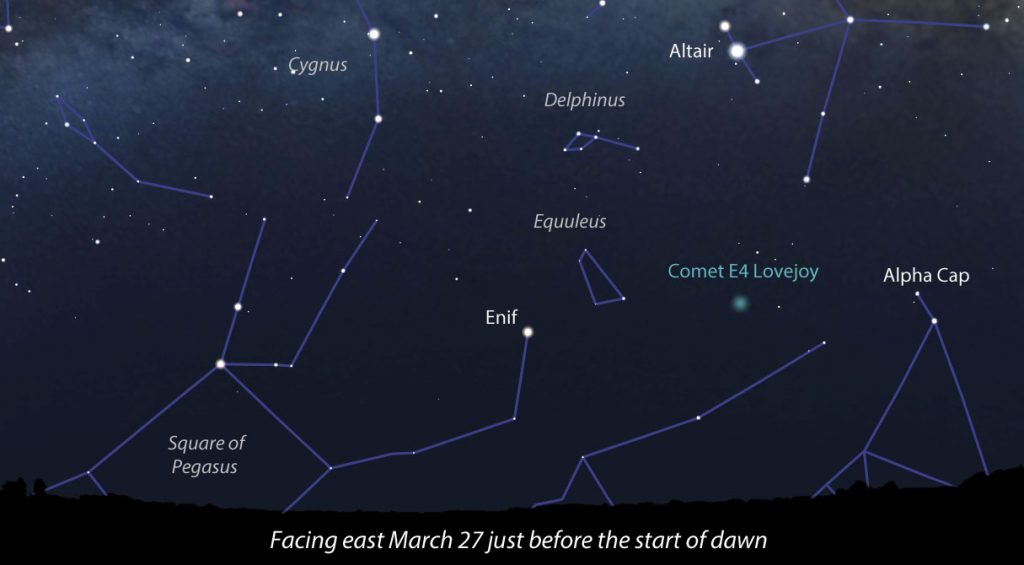
This map shows the sky tomorrow morning before dawn from the central U.S. (latitude about 41° north). Created with Stellarium
Good news. E4 Lovejoy is moving north rapidly and is now visible about a dozen degrees high in Aquarius just before the start of dawn. I'll be out the next clear morning, eyepiece to eye, to welcome this new fuzzball from beyond Neptune to my front yard. The map above shows the eastern sky near dawn and a general location of the comet. Use the more detailed map below to pinpoint it in your binoculars and telescope.

This chart shows the comet's position nightly (5:30 a.m. CDT) through April 9. On the morning of April 1 it passes just a few degrees below the bright globular cluster M5. Click to enlarge, save and then print out for use at the telescope. Map: Bob King, Source: Chris Marriott's SkyMap
Spring brings with it a new spirit and the opportunity to get out at night free of the bite of mosquitos or cold. Clear skies!
No comments:
Post a Comment